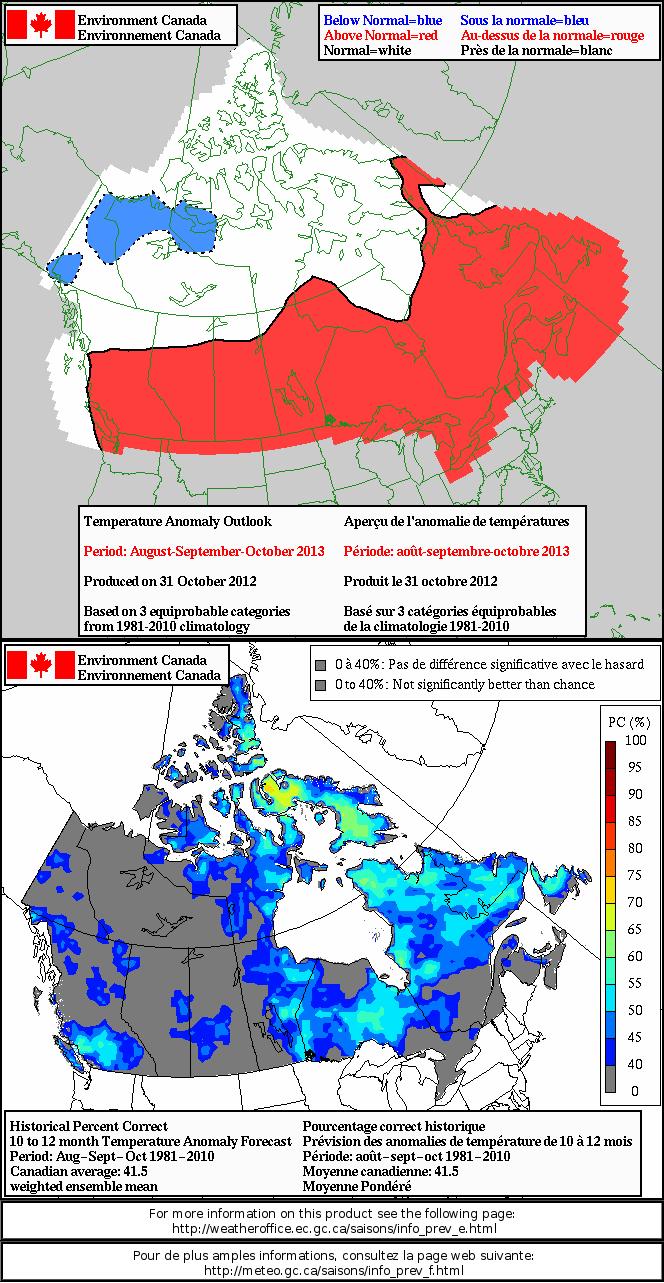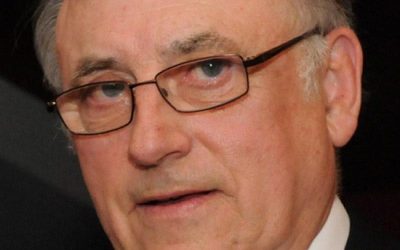Alice laughed. “There’s no use trying,” she said. “One can’t believe impossible things.” “I dare say you haven’t had much practice,” said the queen. “When I was your age, I always did it for half an hour a day. Why, sometimes I’ve believed as many as six impossible things before breakfast.” Through the Looking-Glass, and What Alice Found There (1871), Lewis Carroll
Alice’s conversation with the White Queen must be similar to that which Canada’s environment minister and Alberta’s premier have with their top advisors on climate change and the oil sands.
This week Americans witnessed the bizarre spectacle of a Canadian government minister and a provincial premier promoting several impossible things at the same time. Tuesday, while trying to lobby on behalf of the Keystone XL pipeline project, Alberta Premier Alison Redford told her Brookings Institute audience that “… everyone needs to take action” to solve the imaginary climate crisis. Then Wednesday, environment minister Peter Kent announced millions of dollars more will be devoted to trying to stop climate change, also a wholly impossible objective. Redford and Kent must have clones of Lewis Carroll’s White Queen as their top advisors. Otherwise, how could they really believe, or expect the Canadian public to believe:
- that we are facing a carbon dioxide-induced global warming crisis when warming stopped 17 years ago?
- that climate model forecasts of the distant future have any validity when seasonal forecasts made a year or less ahead of time are less accurate than the throw of a dice?
- that they could acquiesce to, even boost, the climate scare and also effectively lobby on behalf of a project that is one of the most intensive carbon dioxide (CO2) emitters on the planet?
Let’s address these “impossible things” one by one. First, as illustrated in the following graphs, while CO2 levels in the atmosphere have reportedly risen almost 10% in the past 17 years, mainly because of the growth in emissions in China and India, temperatures as calculated from satellite measurements have flat-lined. In fact, they are dropping slightly in the southern hemisphere. Even Rajendra Pachauri, the head of the now-disgraced United Nations Intergovernmental Panel on Climate Change (IPCC) admits this.
Of course, this lack of warming was not forecast in the computerized climate models that are the primary basis of the climate scare. Yet, Redford and Kent expect Canadians to support their continuing to spend billions of taxpayer dollars because some computer models forecast climate Armageddon for sometime later this century. This leads directly to discussing the second “impossible thing” that Kent and Redford’s White Queen advisors apparently want Canadians to believe, namely that long-term model-driven climate forecasts are meaningful when Environment Canada (EC) model-driven seasonal forecasts, made a year or less before the season in question, don’t work.
As detailed at http://www.weatheroffice.gc.ca/saisons/#forecasts, periodically throughout the year, EC makes seasonal temperature and precipitation forecasts. Here is an example, a forecast made on October 31, 2012 for the period nine months later, August, September, October 2013.
Over time, EC keeps track of their history of accuracy, how well their forecasts have fared in comparison with what really happened. As one can see in the second figure above, for the period August/September/October, it is typically less than 50 percent for most of the map when forecasts are made 10 – 12 months ahead. Their predictions of future weather and climate for other seasonal periods this far in advance are no better. How about EC’s very shortest seasonal (3 month) forecasts, i.e., when they predict a season’s conditions the day before the season starts? Here are the most recent temperature data on the EC Webpage as of this writing:
Here is the forecast:
Here is what happened:
Here is the average accuracy for the period:
What the plot above shows is that, even when the 3 month forecast is made at the very beginning of the period, the “Historical Percent Correct” is “Not significantly better than chance” over about half the country. The rest of the country hovers at about 50-50. How do EC models do with precipitation? Again, let’s examine the most recent data on the EC site (EC are over a year behind in preparing observed precipitation plots).
Here is the forecast:
Here is what really happened:
The Historically Percent Correct map for precipitation in this three month period makes the temperature forecasts look good:
Despite these abject failures Minister Kent seems to actually believe that, to quote from his April 10, 2013 Washington DC speech, “As an Arctic nation, Canada understands first-hand the importance of addressing short-lived climate pollutants, which have an impact on the rate of Arctic ice melt.” Well, no, we don’t know that at all. In reality, since we are yet unable to make reliable forecasts for 3-month periods, even when done just before the periods start, there is no chance of being able to understand what impact “short-lived climate pollutants” “have on the rate or Arctic ice melt”, or any other climate phenomena for that matter.
We know that at least some of these pollutants, black soot and ground level ozone, for example, can create serious health problem for people and so we need to monitor and control them. But it should be done as part of pollution regulations, rules based on known impacts on human health, not as part of a vain, largely fictitious attempt to control global climate.
Nevertheless, as a result of his apparent belief in this “impossible thing”, Kent announced that he just conjured up 10 million more of our dollars to support the Climate and Clean Air Coalition to Reduce Short-Lived Climate Pollutants, and a $2.5 million contribution to the Climate Technology Centre and Network. He might as well throw these funds into a hole in the arctic ice.
The federal government already threw $10 billion into the climate change hole since 2006 and climate was not affected in the least. These plans did, however, divert vitally-needed money away from addressing real environmental problems such as the massive clean-up needed of toxic waste dumps across Canada. Both the Minister and the Premier seem unaware that the scientific basis on which they are spending vast amounts of taxpayer money has been thoroughly discredited.
Kent takes scientific advice from EC, Redford from the province’s new Ministry of Environment and Sustainable Resource Development. But both of these departments take their lead from the IPCC. But damning corruption by key members of the IPCC was revealed in e-mails leaked from the Climatic Research Unit in three major data dumps since 2009.
In addition, every prediction they’ve made was wrong. In science, if your predictions are wrong, your science is wrong and policy based on that science is wrong. The problem stems from the fact that EC are founding members of the IPCC. Their web site supportively cites the IPCC with meaningless and erroneous statements.
“There is a very strong body of evidence, based on a wide range of indicators, that climate change is occurring, and the climate system is warming.”
Climate change is natural, not new, and normal. The climate system is not warming. Despite this, they claim:
“…the recent warming has been largely attributed to human activity, primarily the release of carbon dioxide and other greenhouse gases to the atmosphere.”
The attribution is by the IPCC. Alberta’s Ministry of Environment and Sustainable Resource Development does the same thing. Typically, the bad science is masked by the claim that they are dealing with pollution. Redford made this mistake in her Brookings Institute talk on Tuesday, for example. This deception is only further proof they don’t know what they are talking about since CO2 is not a pollutant and the climate impact of short-lived climate pollutants is largely unknown.
Kent and Redford’s Alice through the looking-glass advisors expect Canadians (and Americans) to believe yet a third “impossible thing before breakfast”, namely that that they can promote the critical importance of solving a supposedly CO2-induced climate crisis while at the same time lobbying to expand one of the most CO2-intensive energy sources on the planet.
Climate campaigners point out that this is illogical. They are right. It is analogous to a medical doctor telling a patient they need to lose weight while also encouraging them to eat more chocolate cake.
Oh, but we are also encouraging Canadians to reduce other fattening foods/greenhouse gas emissions, chocolate cake/oil sands-promoting doctors Kent and Redford object. Nope. Doesn’t work. While global warming alarmists are wrong on the science of climate change, they are right on the logic. As outlined in ICSC’s video here, http://www.youtube.com/watch?v=aXEanhiRtM0, today’s hopelessly flawed Keystone XL/oil sands marketing strategy is not difficult to fix.
Kent and Redford must take their lead from the fictitious Lady Answerall who, in Jonathan Swift‘s 1738 farce “Polite Conversation”, said “she cannot eat her cake and have her cake.”
Because that is exactly what Kent and Redford are trying to by boosting two hopelessly incompatible policies at the same time–stopping climate change and promoting oil sands expansion.
Since the oil sands have immense value to Canada and the world and the climate scare is based on an incorrect interpretation of the science, it is obvious which policy must be sacrificed.








